
Section A Introduction to Jerusalem
Chapter 5 - The Modern Gates
Suleiman’s original walls had six gates: Damascus Gate, Herod’s Gate, Stephen’s Gate, Dung Gate, Zion Gate and Jappa Gate. The gates were all designed and built to have an L-shaped entry instead of a straight line of entry. Taking this sharp ninety degree turn would have slowed down an invading army in the final moments of a siege. The “L” turns have been removed from Stephen’s Gate and the Dung Gate to better facilitate modern traffic but can still be seen in the other four gates.
Jaffa Gate
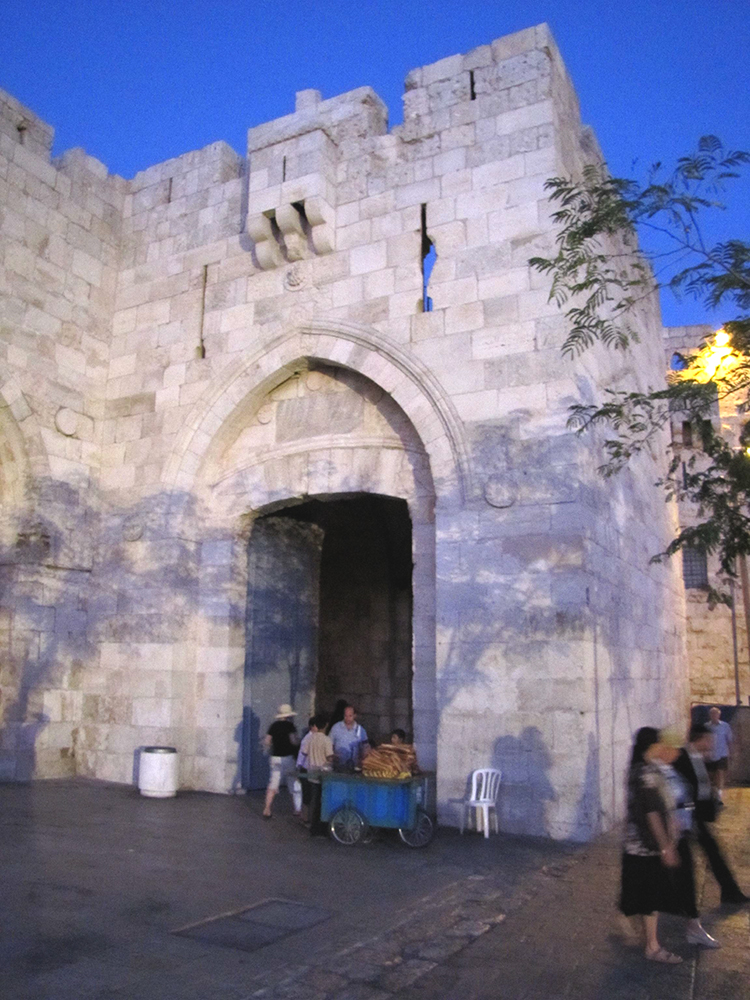
A local resident is selling bread from his cart by the L-shaped Jaffa Gate entrance.
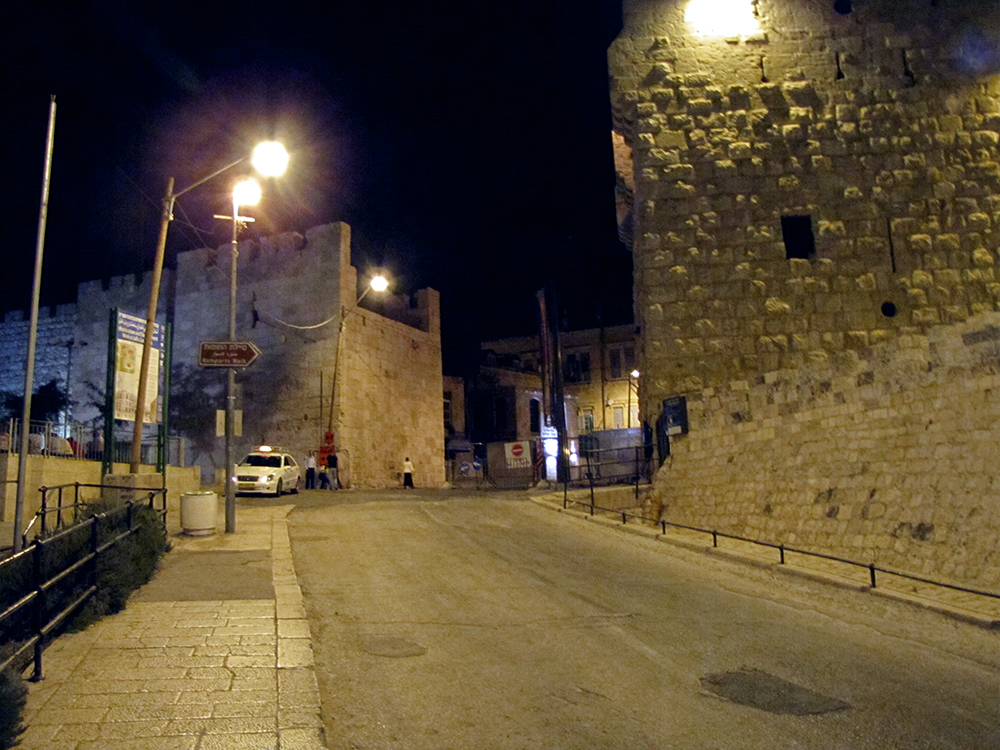
This road runs right beside the Jaffa Gate, (which sits directly to the left of the road).
The present name of this gate is the Jaffa Gate since it leads to the port of the city of Jaffa (which is also known as Joppa, so it is sometimes called the Joppa Gate). It was originally called Bab el-Khalil, or “the Gate of the Friend,” since it opens towards Hebron which is where Abraham, the friend of God, came from. In the photo above, the Jaffa Gate is on the left and the Citadel on the right.
The wall south of Jaffa Gate (in between the gate and the Citadel) was removed in 1898 by the Ottoman sultan Abdul Hamid II to allow his ally Kaiser Wilhelm II of Germany to ride into the city in his carriage. The moat, which was located where the road is now, was also filled in at that time. The sultan did this to give the Kaiser the impression that he was entering Jerusalem through the Jaffa Gate when really he was not, since there is a legend that says all conquerors will enter through the Jaffa Gate. In 1917, the British General Edmund Allenby entered through the Jaffa Gate on foot and gave a speech on the steps of the Citadel.
The Jaffa Gate was the focus of Israeli forces in 1948 as they tried to capture the Old City in order to unite it with Israeli-controlled western Jerusalem. However, the Jews did not gain control of it until 1967. Between 1948 and 1967 the Jordanians could not use this gate for traffic so they had to widen the Dung Gate to get access the Old City and its Citadel.
Zion Gate
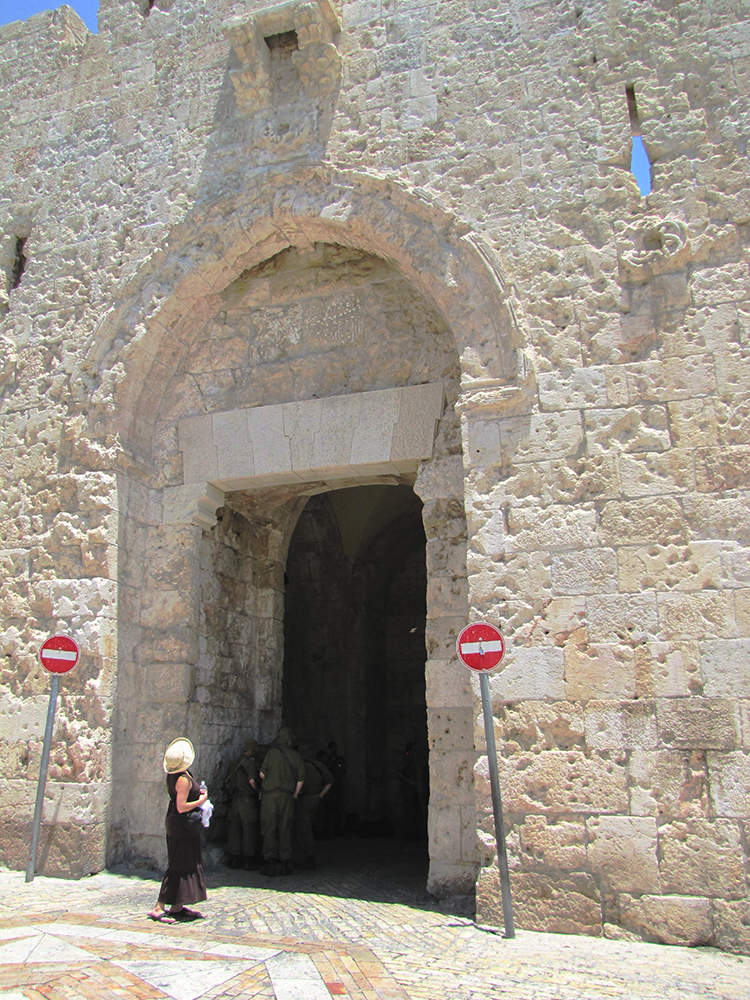
A group of Israeli soldiers huddle inside the Zion Gate.
The Zion Gate sits on Mount Zion. The Arabic name is Bab Nabi Daud, or “the Gate of the Prophet David” because the Crusaders and other early Christians misidentified the location of David’s tomb. David was not buried on Mount Zion, but in the City of David, probably on the Ophel outside the northern walls of the city at that time:
Then David rested with his fathers and was buried in the City of David. - 2 Kings 2:10
The tomb of David was still in Jerusalem in 30 AD when Peter addressed a crowd of Jews and said:
Brothers, I can tell you confidently that the patriarch David died and was buried, and his tomb is here to this day. - Acts 2:29
Bullet damage from the fight between Arabs and Israeli forces for the Jewish Quarter during the war in 1948 can still be seen in the Zion Gate. The Zion Gate and the Jaffa Gate were closed from 1948 to 1967 when the Jordanians (Arabs) maintained control of the Old City. They closed the gates because they faced West Jerusalem, which was controlled by Israel.
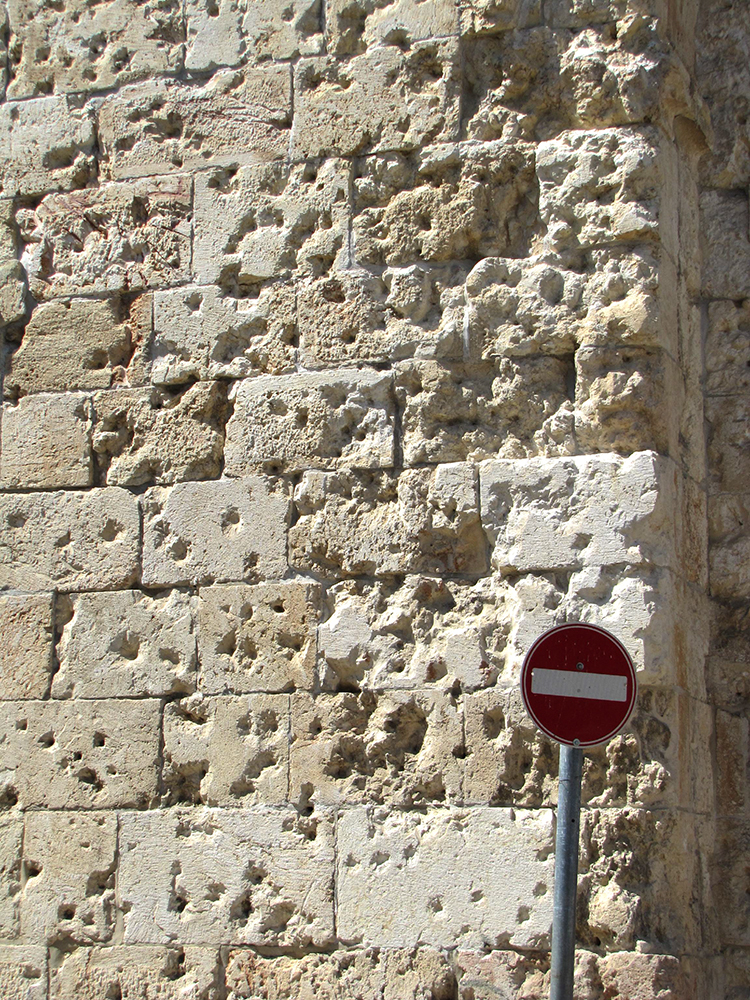
The scars from artillery fire in 1948 still mark the Zion Gate.
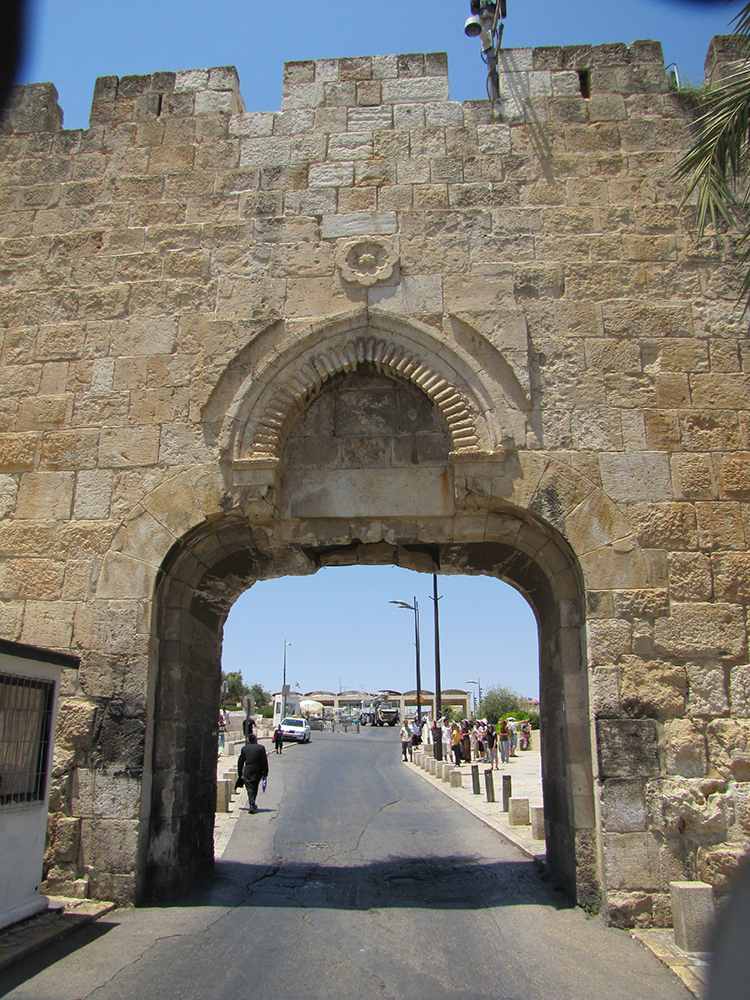
The view looking into the Dung Gate toward the Western Wall entrance. This gate was widened in 1953 by the Jordanians in order to move traffic in and out of the Old City. The arch at the top of the gate shows the original width of the gate that was originally used for pedestrians.
Dung Gate
The pointed arch at the top of the Dung Gate above the lintel indicates that it was originally designed as a postern gate, which is a secondary gate in a fortification, often concealed so the city’s occupants could secretly escape the city or deploy troops against besiegers. This gate was widened in 1953 by the occupying Jordanians so that vehicles could get into the Old City, since the Jaffa Gate and Zion Gate were under siege and closed. At one point in the city’s history the cattle market was located inside the Dung Gate, and this may be how the gate got its name.
Golden Gate
The Golden Gate was built around 640-705 AD by the last Byzantine ruler, or possibly the first of the Muslim rulers. This gate was sealed in the 700s to prevent Jewish zealots from creating and promoting a messiah like political figure to rally around. The Crusaders kept the gate blocked, but twice each year they would unblock and open it for Palm Sunday in the spring and for a fall festival called “Exaltation of the Cross.” This gate has not been unblocked since the Crusaders lost control of Jerusalem.
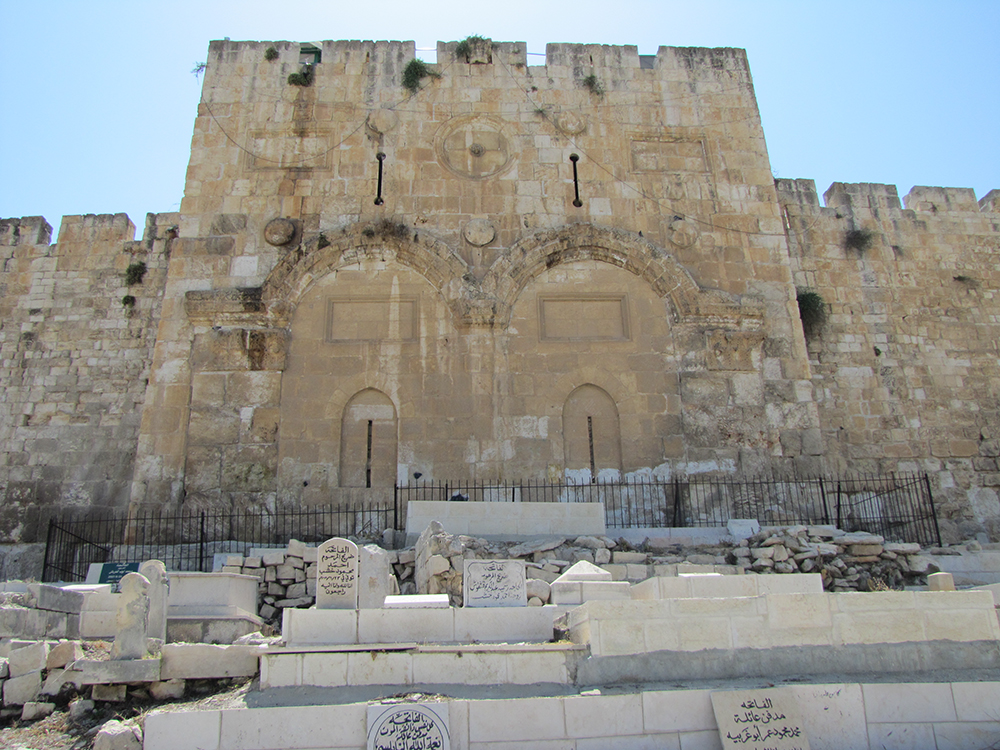
The Golden Gate in the Eastern Wall.
Arab graves fill the space in front of the entire length of the eastern wall.
Behind the black metal fence setting in front of the Golden Gate and underneath recently poured concrete is the now-inaccessible Herodian gate. Photos of this 2000-year-old gate (and its Herodian ashlars in the arch) were taken in 1969 by James Flemming, a student from the American Institute of Holy Land Studies in Jerusalem (now called Jerusalem University College). Lambert Dolphin records James Fleming’s experience and discovery in these words:
In the year 1969 Jerusalem archaeologist James Fleming was investigating the Eastern wall of the Temple where a Muslim cemetery has long been located. It had rained heavily the night before and the ground remained soggy the next day. As he investigated the area immediately in front of the Golden Gate, the ground beneath his feet gave way and he dropped into a hole about eight feet deep. Fleming found himself "knee-deep in bones" and became suddenly aware he had fallen into a mass burial site. To him, the most amazing aspect of this incident was his clear view of five large wedgeshaped stones set into a massive arch. It appeared he had discovered an ancient gate under the present Golden Gate: "Then I noticed with astonishment that on the eastern face of the turret wall, directly beneath the Golden Gate itself, were five wedgeshaped stones neatly set in a massive arch spanning the turret wall. Here were the remains of an earlier gate to Jerusalem, below the Golden Gate, one that apparently had never been fully documented. (BAR, Jan./Feb. 1983, p30)
Very soon after this discovery the Muslims covered the chamber, cemented over the top, and surrounded the mass grave with a protective iron fence. Sadly, this means it is unlikely that Israeli archaeologists will be able to excavate the gate under the Golden Gate in the near future. In contrast visitors to the Damascus Gate are now able to visit an ancient, restored old Roman gate beneath the present Damascus Gate (the present upper Damascus Gate was reconstructed in 1537-38).
Josephus states (Wars V, 184-189) that the Eastern temple enclosure wall was the only one not rebuilt by Herod the Great. The ancient gate beneath the Golden Gate may therefore date from Solomonic times or at least from the time of Nehemiah. Such a view of consistent with Asher Kaufman's view that the First and Second Temples were located 110 meters North of the Dome of the Rock in the immediate vicinity of the small Dome of the Tablets shrine on the main temple platform. (by Lambert Dolphin source)
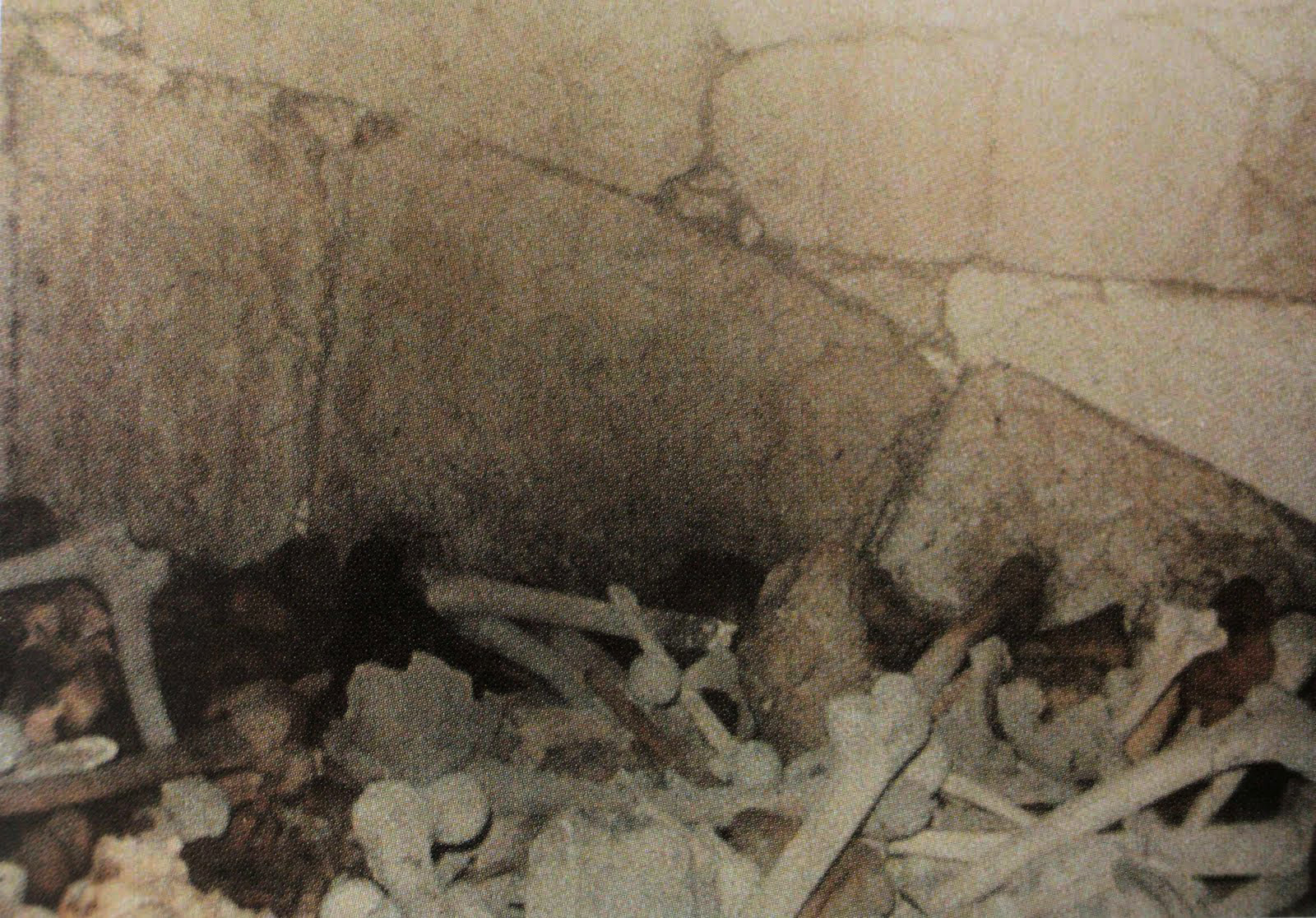
Photo of the ancient gate below the present Golden Gate taken by James Fleming after he had fallen in the grave in front of the Golden Gate in 1969
Read more on the Golden Gate from Galyn Wiemers’ blog.
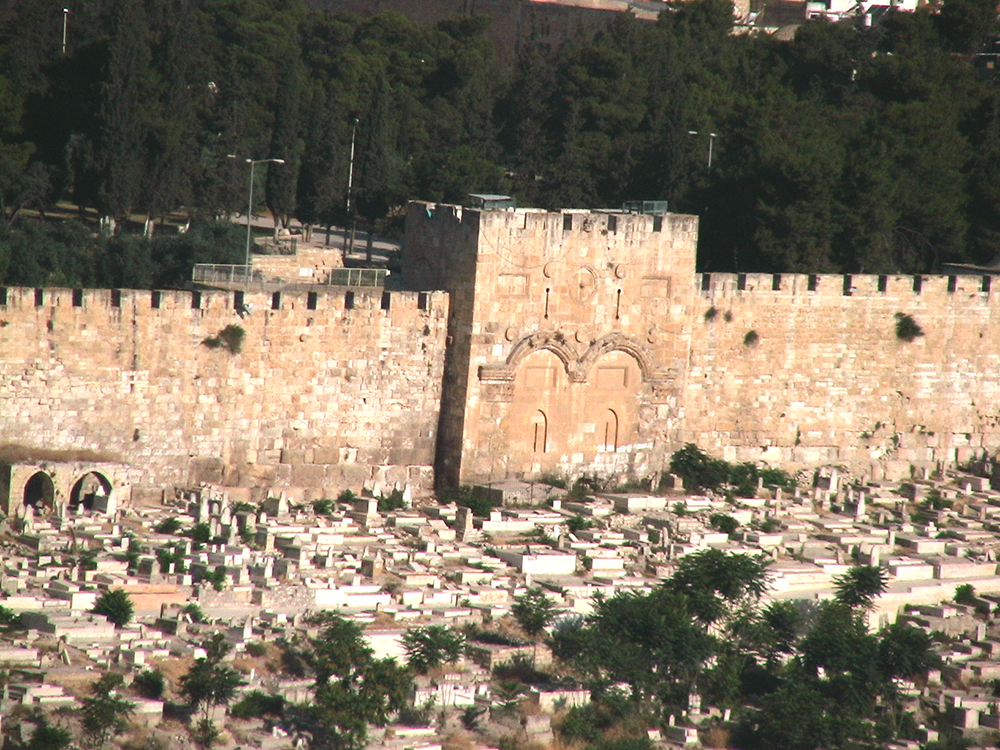
TThe Golden Gate as viewed from the Mount of Olives looking over the Kidron Valley.
Today’s Eastern Gate is also known as the Golden Gate, because it was associated with the Beautiful Gate on the Temple Mount mentioned in scripture. When Jerome translated the Greek New Testament into Latin beginning in 386 AD, he translated the Greek word oraia (“beautiful”) into Latin using the Latin word aurea, which means “golden.” Thus, the Eastern Gate, which was associated with the Temple and prophecy, came into our English language known as the Golden Gate instead of the Beautiful Gate.
Lions Gate (St. Stephen’s Gate)
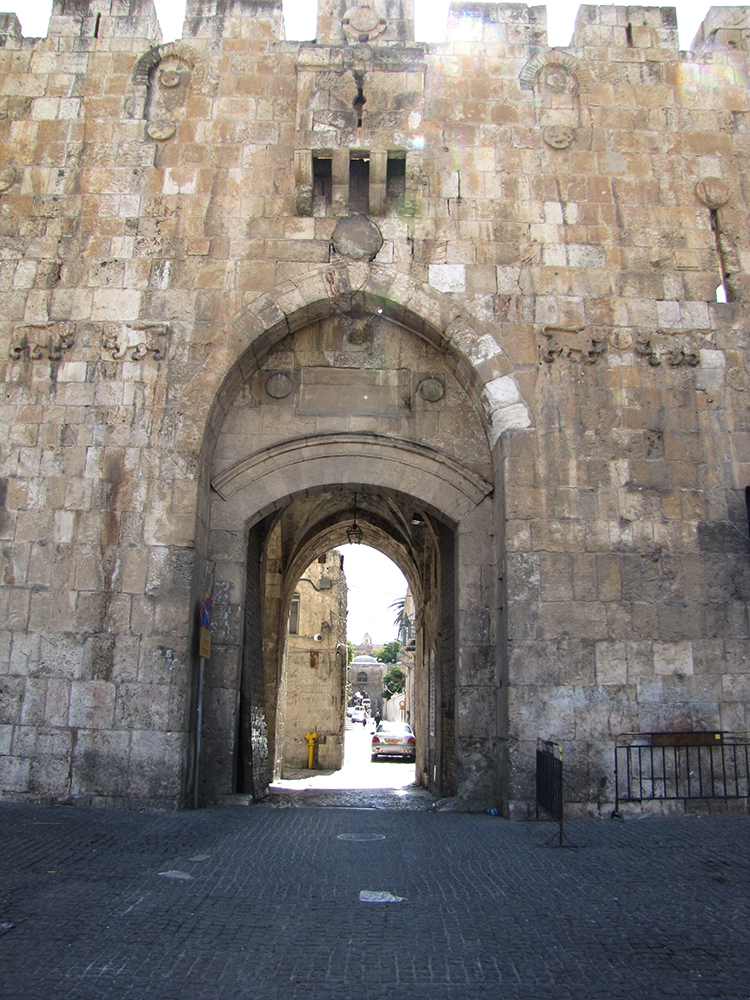
The Lions Gate in the east wall of the Old City.
Originally, the Lions Gate was an L-shaped gate that required a person to enter and turn left. The back wall of the gate was removed by the British in order to allow traffic to enter the Old City. The original arch and remaining part of the gate can still be seen to the left inside the gate.
We know that the location of this gate has not changed from the time of Herod, so it may be where Jesus entered Jerusalem on Palm Sunday. It may also be the same gate that Stephen was taken out of to be stoned in the Kidron Valley as seen in Acts chapter seven:
At this they covered their ears and, yelling at the top of their voices, they all rushed at him, dragged him out of the city and began to stone him. Meanwhile, the witnesses laid their clothes at the feet of a young man named Saul. - Acts 7:57
An earlier tradition associates the north side of the city as the place of Stephen’s stoning.
It was also named “The Jordan Valley Gate” (Bab el- Ghor) by Suleiman.
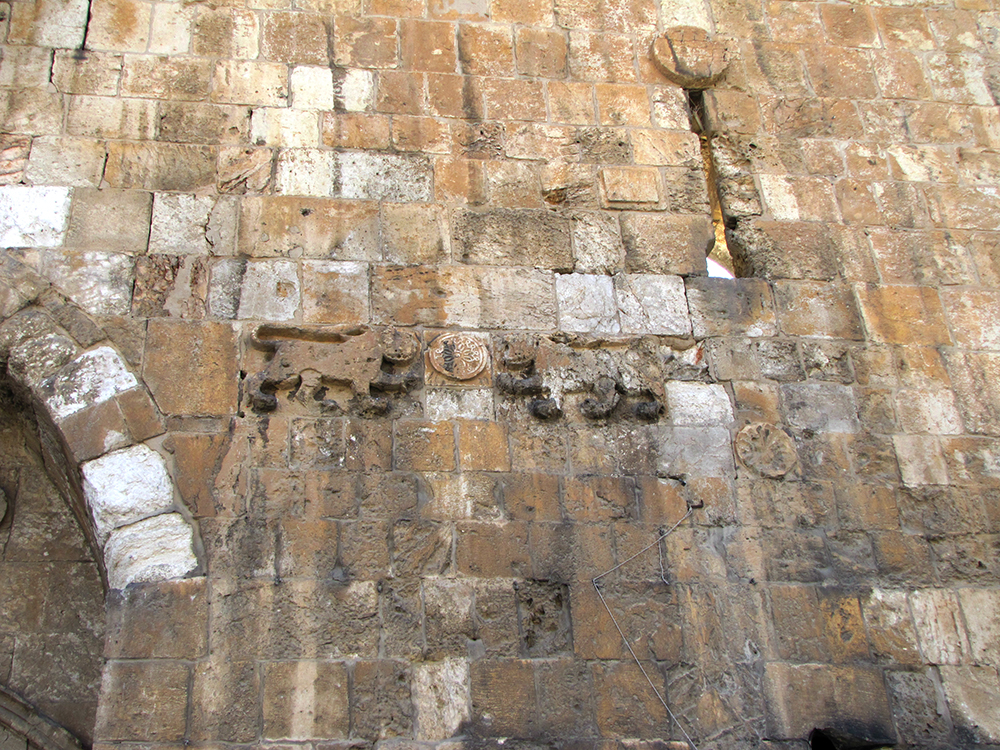
Details of one pair of “lions” on the top right side of the Lions Gate from 1537.
There are two animals on each side of the gate that have been called lions, but may actually be leopards or panthers. These were the emblem of the Mamluk sultan the Ottoman Empire who was defeated in 1517, twenty years before the walls and gates were built. Even though the lion is a symbol of Jerusalem and Judah, it is also possible that these lions were placed here to honor the Mameluk Sultan Baibars (1123-1277).
Baibars defeated the Crusaders, conquered the Middle East and was known as “The Lion of Egypt and Syria.”
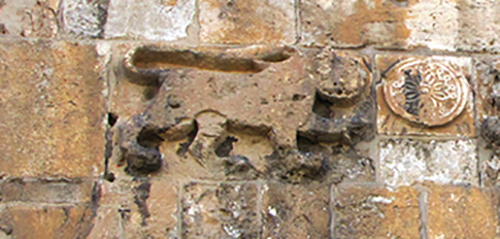
A closer view of one of the four lions at the Lions Gate.
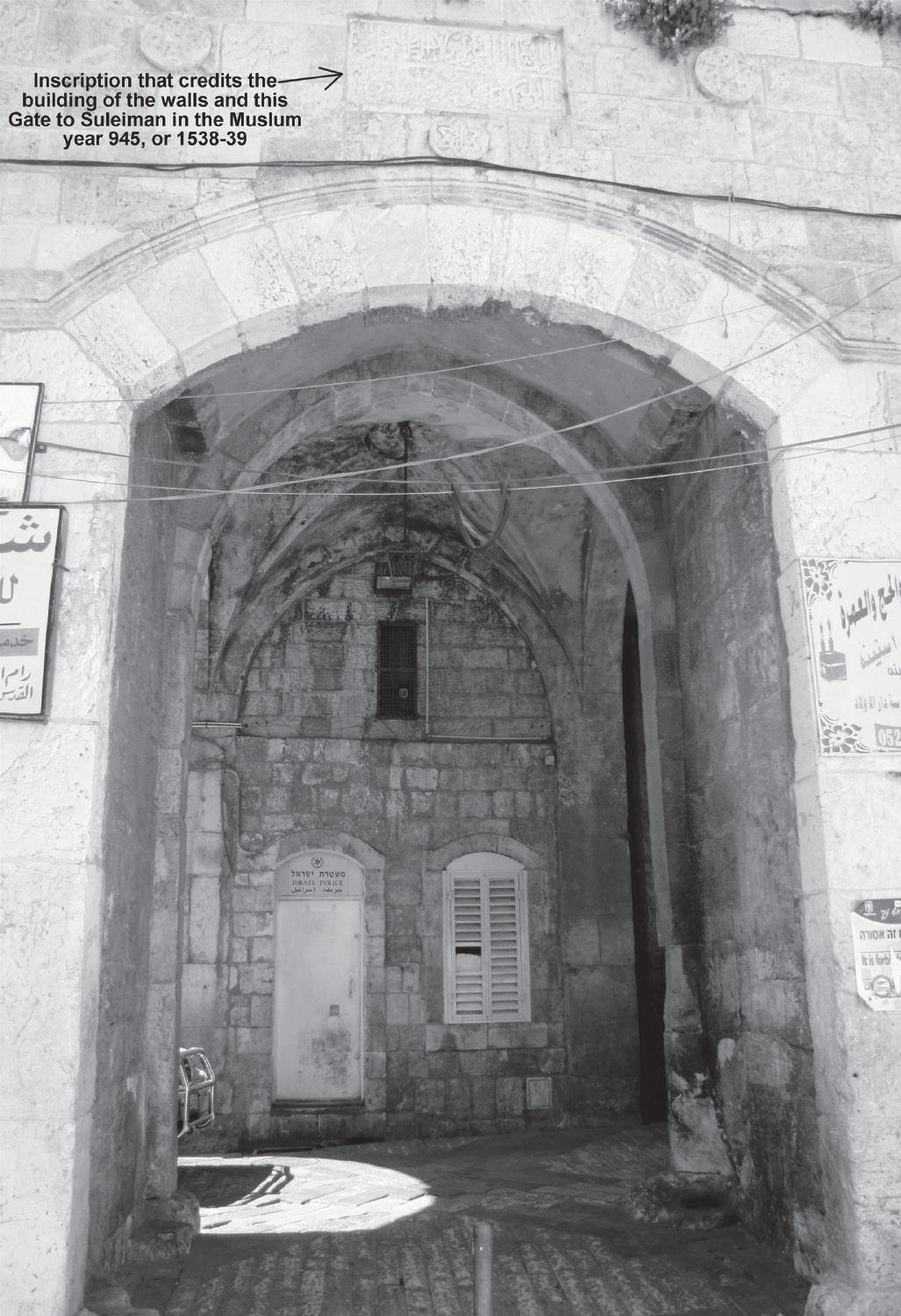
A section of the original L-shaped gate bears the inscription above the entrance on the south side. This Arabic inscription credits the Ottoman Sultan Suleiman the Magnificent, who reigned from 1520-1566, with having built the walls and the gates around Jerusalem. The inscription also names Suleiman’s father Salim Khan and gives him the title “conqueror of the Holy Land.” This inscription is dated in the Muslim year 945 which would be 1538-1539
Herod’s Gate
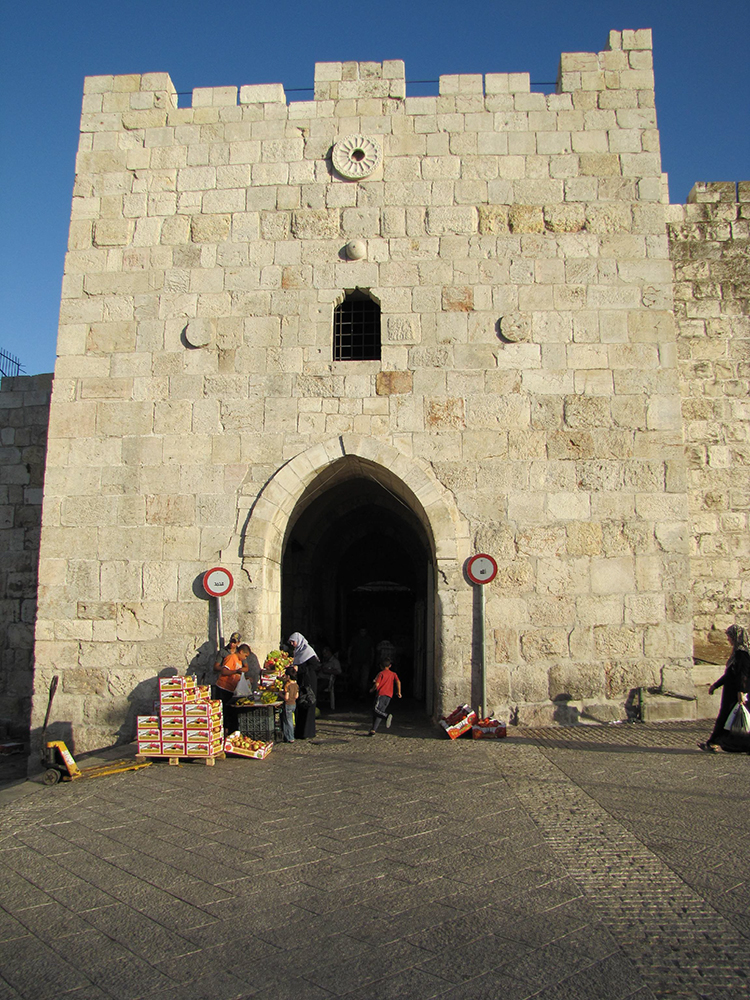
Herod's Gate, or the Flower Gate, sits in the north wall of the Old City.
Although it was called the “Flowered Gate” (Bab ez- Zahr) because of the flower on the tower wall above it, Christians in the 1500s believed they had located Herod Antipas’ palace just inside this gate. The building was actually a Mamluk house, and Herod’s palace was in the Citadel on the west wall of the city just south of the Jaffa Gate. The opening we see today was actually cut into the front of the gate in 1875 by the Ottoman Empire. Originally the gate was entered from the east (left) through a small door in a larger door (wicket gate) which was rarely opened. The road leading to this gate cuts through a 2000-year-old aqueduct, which can still be seen on the west (right) side of this gate by locating the aqueduct’s covering stones.
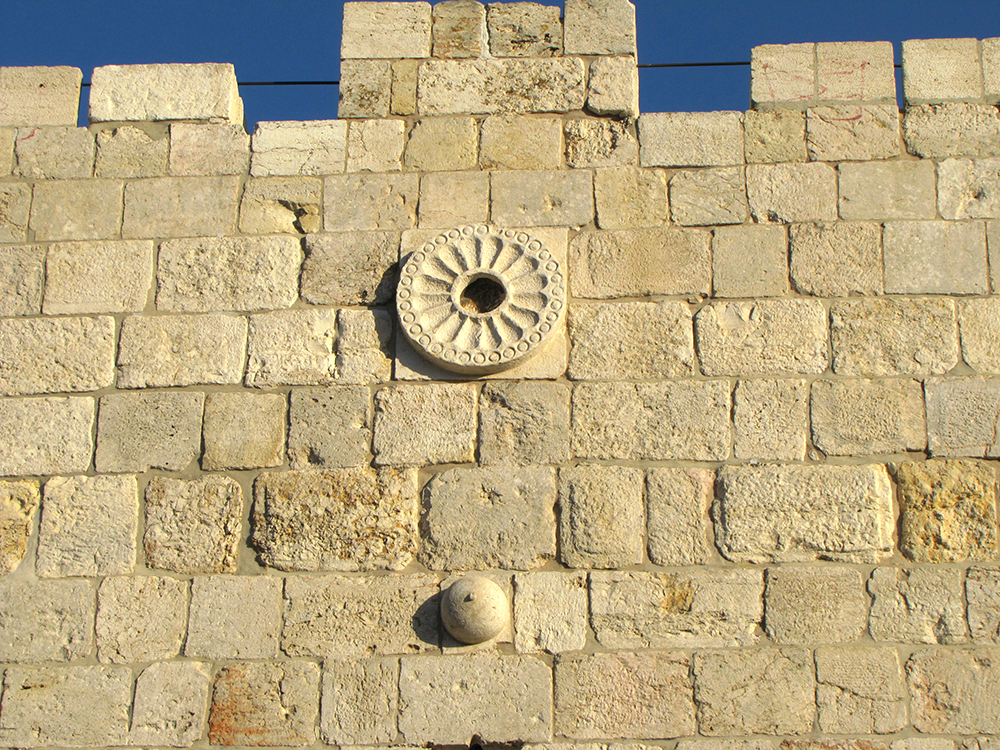
Detail of the flower above Herod’s Gate.
Damascus Gate
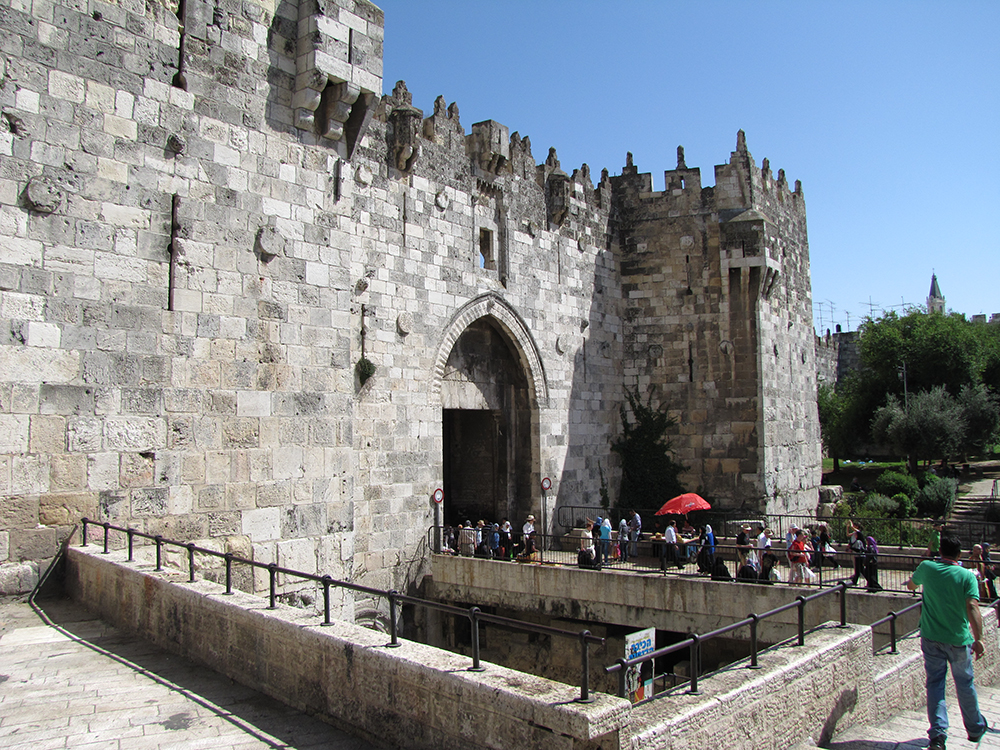
The Damascus Gate is the most elegant of the Old City gates.
The Damascus Gate is the most impressive of Jerusalem’s gates. It is called Damascus Gate because the road coming out of it leads in the direction of Damascus. The Arabs call it the “Gate of the Column” (Bab el-Amud), a name that preserves the memory of a large column that once stood inside the gate, as seen on the Madaba map. Two towers stand on each side of the gate prepared for battle, and a very busy Arab bazaar (marketplace) is crowded and active just inside the gate.
The location of this gate today marks the location of a major city gate from when Herod Agrippa expanded the city walls in 41 AD. The bridge leading into the gate spans an area excavated by the British between 1917 and 1947 where the first and second century gates were found. (This is an example of what might be found under today’s Golden Gate if it were allowed to be excavated.)
Excavation under the Damascus Gate revealed an ancient gate system from 41 BC. Here is one of the pedestrian entrances to Jerusalem built by Herod Agrippa II from 41-44 AD. The arch is a reconstruction completed by Hadrian in 135 AD.
After destroying the city and its walls in 135, Hadrian created a free-standing monumental entrance into Aelia Capitolina at this location. It was then called the Nea Gate, or New Gate.
Excavation under today’s Damascus Gate has revealed a variety of finds from Jerusalem’s history, including base molding similar to the molding on each side of the small pedestrian gate. A stone with the mark of the Tenth Legion is also visible, along with paving stones from the first century. Hadrian (or, an emperor who followed him) placed a large victory column in the middle of the plaza on the inside of this gate. This column, the plaza and the Nea Gate can be seen on the Madaba map.
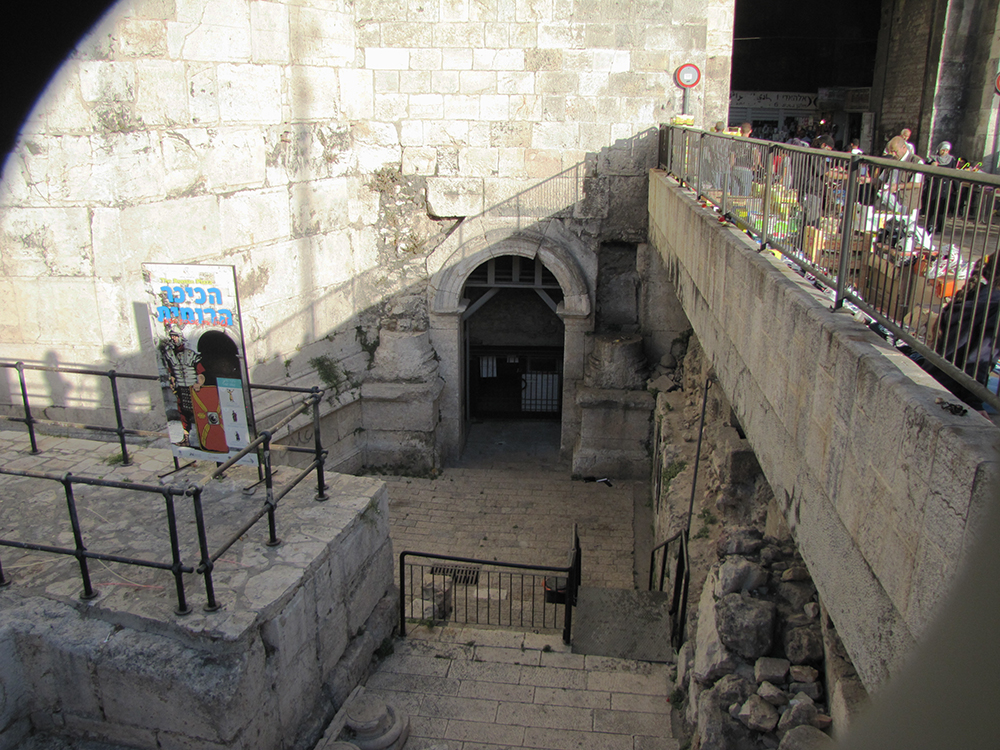
A smaller pedestrian entrance (seen in this photo) is located below and to the east (left) of the Damascus Gate. This pedestrian gate and its tower date from the time of Herod Agrippa I’s expansion of the city walls to the north and west in 41-44 AD. He built a larger gate and this smaller gate at this location. The main walls and gate were destroyed by Hadrian in 135 AD, but this smaller pedestrian gate, its tower and molding on the lower half of the gate and the molding along the base of the tower still remain from Herod Agrippa I’s original work in 41 AD. The arch and capping stone are from Hadrian’s restoration in 135 AD.
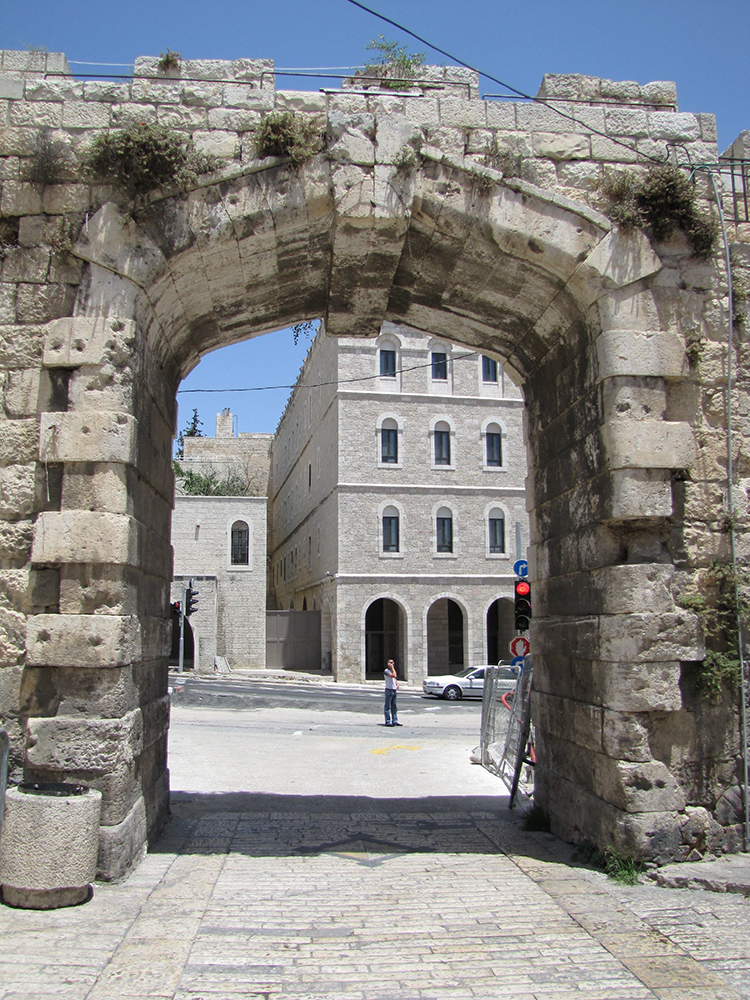
The New Gate was built into the wall in 1887.
New Gate
The New Gate was not part of the original 1535 design of Suleiman the Magnificent. Even though the New Gate is located just up the hill from the Damascus Gate in the north wall, there is clearly no comparison in grandeur. The New Gate was placed into the wall in 1887 by the Ottomans so that people could conveniently access the homes being built outside the city wall to the north. The sultan Abdul Hamid also wanted to assist the Christian pilgrims from Russia, (who stayed at the Russian Compound just outside these walls), so they could have easy access to the Church of the Holy Sepulcher.